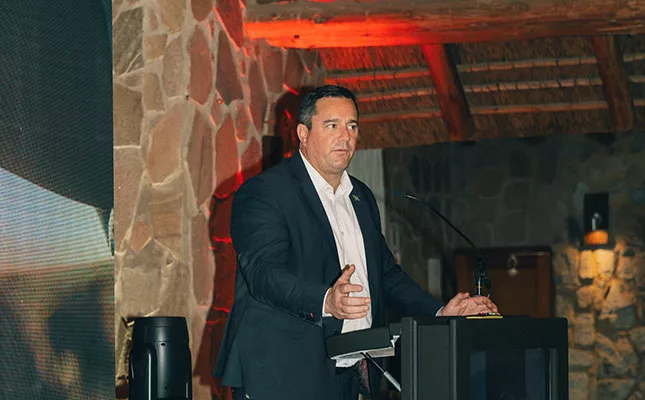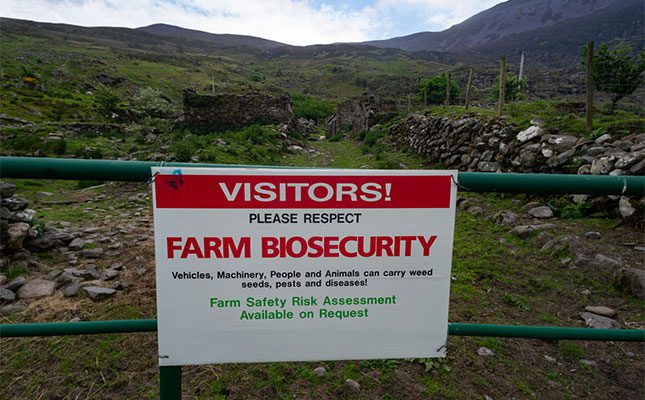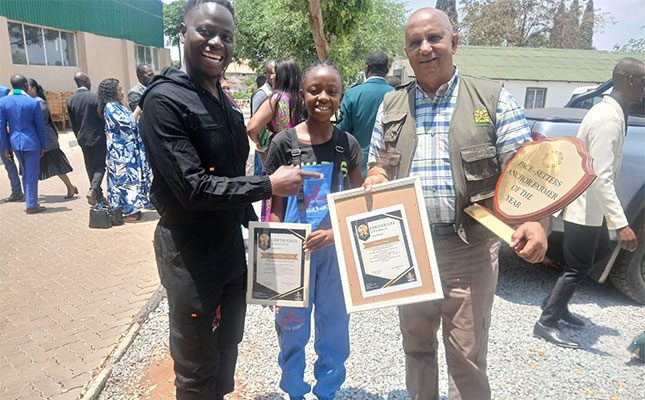
Photo: Facebook | RMIS
The expanded platform integrates multiple livestock management systems to capture, verify, and share movement data across the value chain, which is a key requirement for strengthening disease control and unlocking export markets.
The launch event was attended by Minister of Agriculture John Steenhuisen, who strongly endorsed the initiative. He emphasised that the system is fundamentally important to the future of South Africa’s red meat industry.
“The beauty of this traceability system is that it has built trust from the ground up and was initiated by the red meat industry itself,” he added.
Speaking to Farmer’s Weekly, Steenhuisen said international buyers consistently ask about the systems countries have in place to monitor livestock movement and guarantee product integrity.
“With this system, we can now approach international markets with confidence. We have a secure, credible mechanism in place, and this will open the doors much wider for South African red meat,” he added.
Steenhuisen stressed that the traceability platform is industry-owned and not controlled by government.
“Government has no desire to control anyone’s data, and none of the information is stored on government servers. While government can access disease-related and movement data when necessary, the strength of this system lies in the fact that the data belongs to the industry,” he explained.
Steenhuisen added that the platform will give government a clear dashboard for monitoring animal movement and responding to disease outbreaks, with the additional benefit of strengthening stock theft prevention.
In addition, he said Phase 2 of the platform positions South Africa to demonstrate its commitment to animal health and disease surveillance to global trading partners.
“This will unlock markets currently closed to South Africa. Innovation of this kind, combined with strong partnerships, will take us to the next level internationally.”
Demonstrating full value chain functionality
Representatives from organised agriculture and other industry stakeholders were given a live demonstration of the system’s capabilities, from capturing Global Location Numbers and recording animal movement to generating traceability reports and enabling rapid disease tracking.
Dewald Olivier, CEO of RMIS, said after the launch that the traceability system offered not only clear financial advantages but also significant improvements for animal health.
He said RMIS had brought the platform to full operational status in just 18 months, a milestone made possible through collaboration across the entire red meat value chain.
“RMIS could not impose this system on the sector. Instead, we worked with people who had already made their own efforts to address traceability. Their input played a vital role in shaping a practical, workable solution,” he explained.
Olivier added that adopting animal tagging and movement recording would require a cultural shift within the red meat and broader livestock industries.
“We will need all our partners to assist, guide, and support RMIS in sharing information about the system. We cannot create nationwide awareness on our own; everyone needs to understand the benefits and added value that movement data bring to the industry,” he said.
To support producers who are not yet using digital livestock recording tools, RMIS also introduced its RMIS Movement App, a free, user-friendly application designed especially for small-scale and emerging farmers. The app will be available for download in December 2025.
Addressing key industry challenges
With Phase 2 now operational, the RMIS Traceability Platform is starting to address the following persistent barriers in the industry:
- Abattoir traceability: carcasses can now be traced back to their origin.
- Export readiness: improved data integrity strengthens compliance with international market protocols.
- Faster disease response: the system enables quicker, more accurate tracing during disease outbreaks.
The enhanced platform aligns directly with the Red Meat Industry Strategy 2030, which identifies the absence of unified traceability as one of the industry’s greatest vulnerabilities.
Phase 2 lays the groundwork for real-time disease control, credible export certification, and broad-based participation across all producer levels, potentially strengthening the resilience, competitiveness, and future-readiness of South Africa’s red meat value chain.












